Abstract
The effect of the component concentrations of a synthetic medium on acetone and butanol fermentation by Clostridium acetobutylicum ATCC 824 was investigated. Cell growth was dependent on the presence of Mg, Fe, and K in the medium. Mg and Mn had deleterious effects when in excess. Ammonium acetate in excess caused acid fermentation. The metabolism was composed of two phases: an acid phase and a solvent one. Low concentrations of glucose allowed the first phase only. The theoretical ratio of the conversion of glucose to solvents, which was 28 to 33%, was obtained with the following medium: MgSO4, 50 to 200 mg/liter; MnSO4, 0 to 20 mg/liter; KCl, 0.015 to 8 g/liter (an equivalent concentration of K+ was supplied in the form of KH2PO4 and K2HPO4); FeSO4, 1 to 50 mg/liter; ammonium acetate, 1.1 to 2.2 g/liter; para-aminobenzoic acid, 1 mg/liter; biotin, 0.01 mg/liter; glucose, 20 to 60 g/liter.
Full text
PDF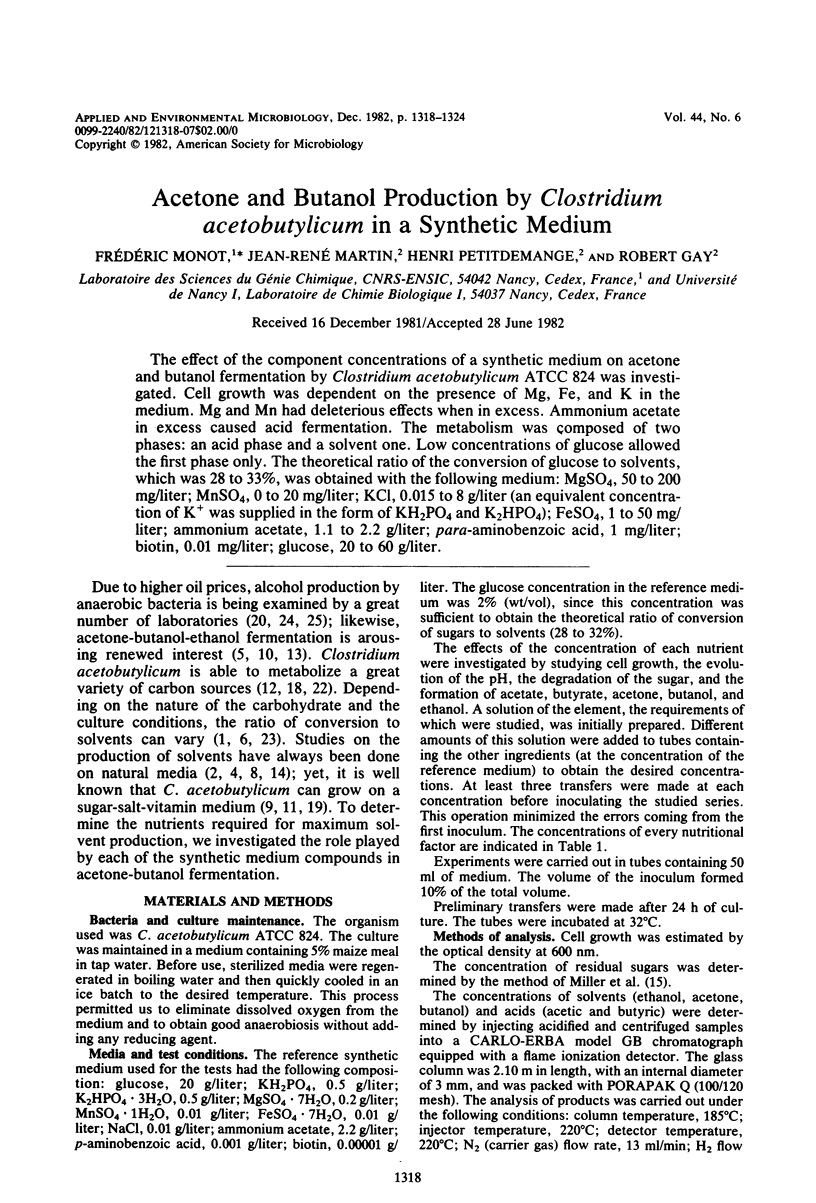
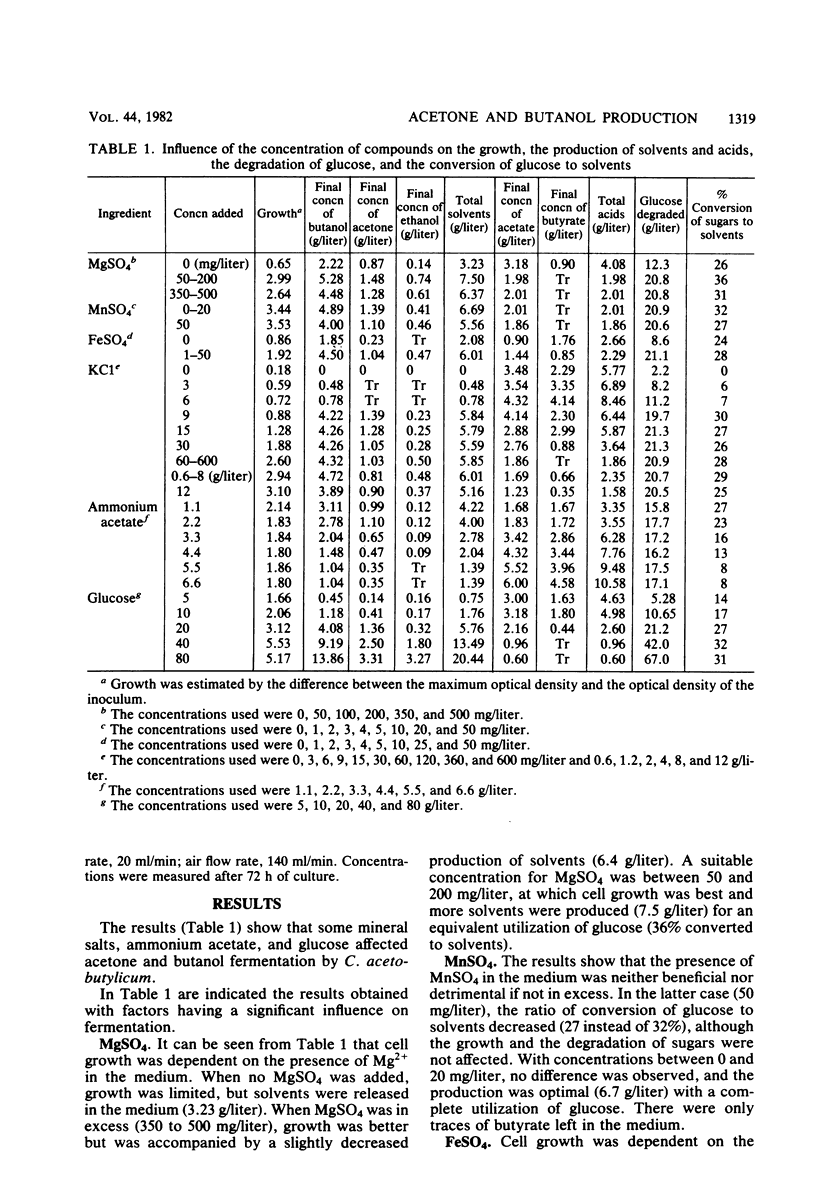
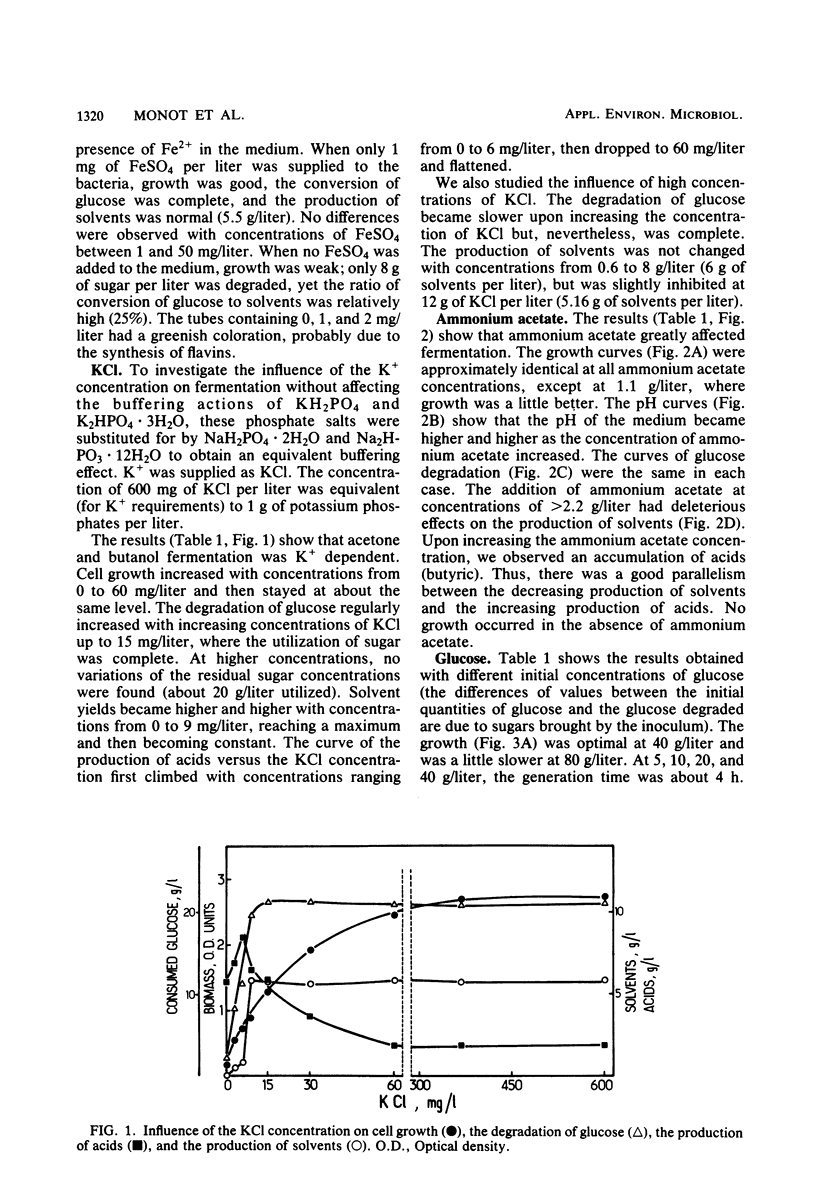
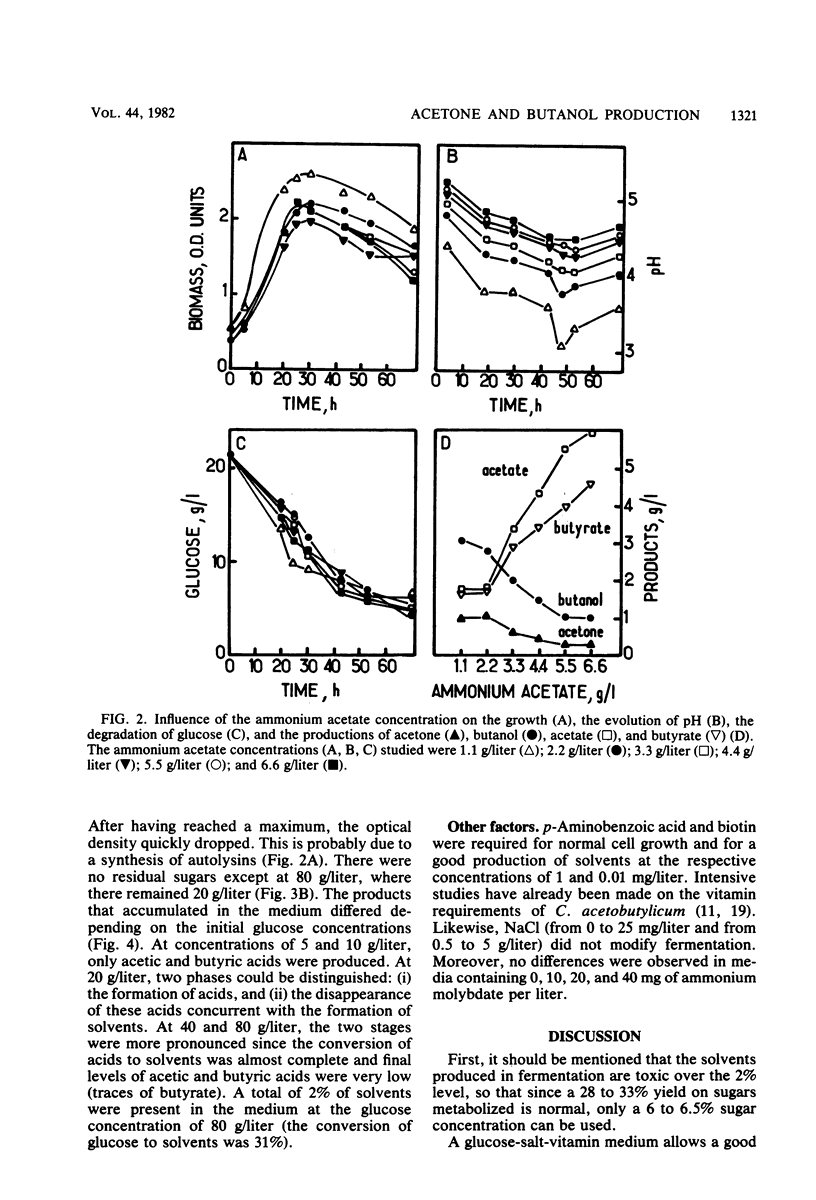
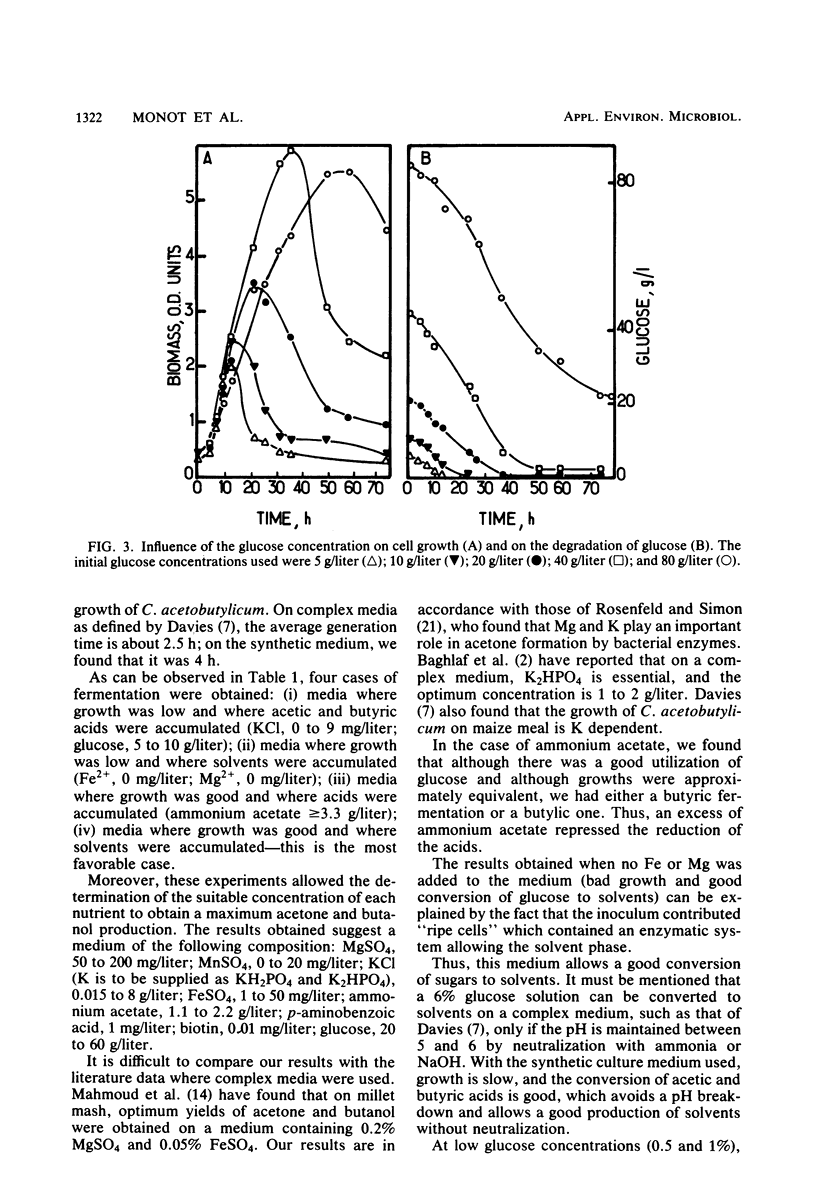
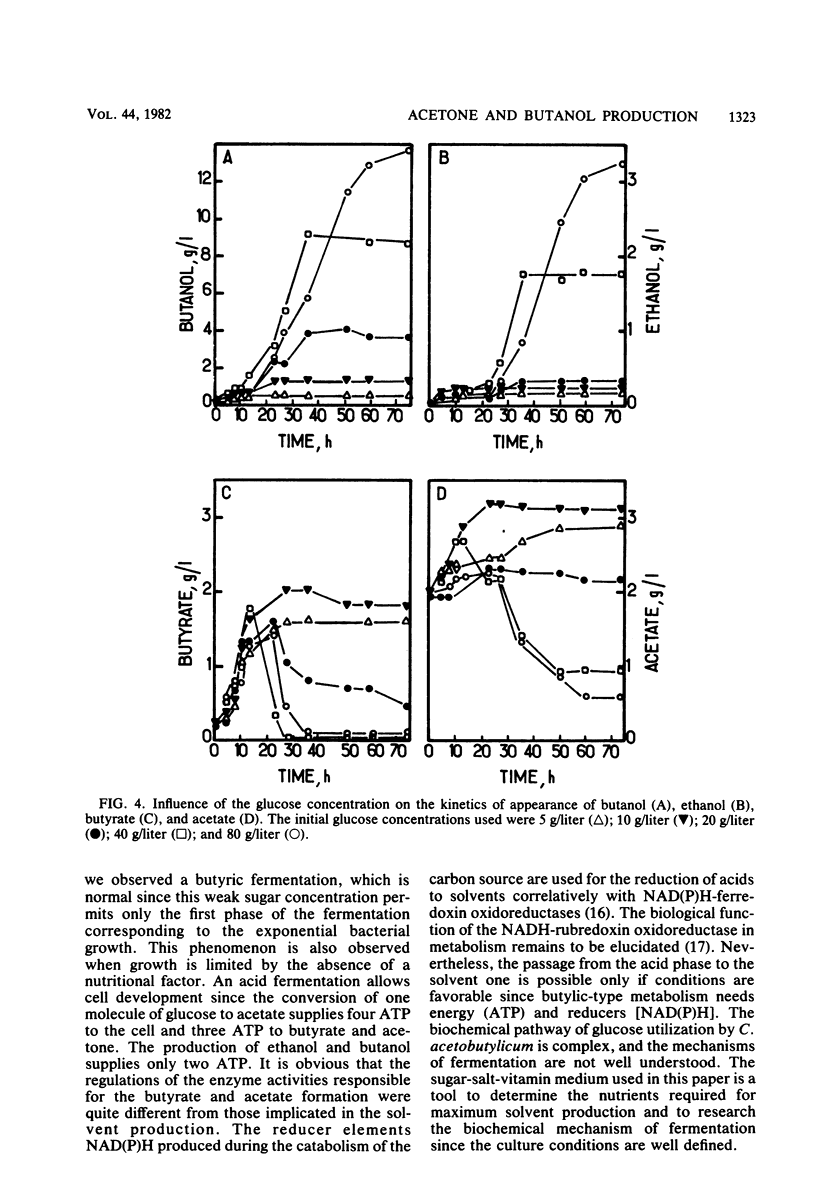
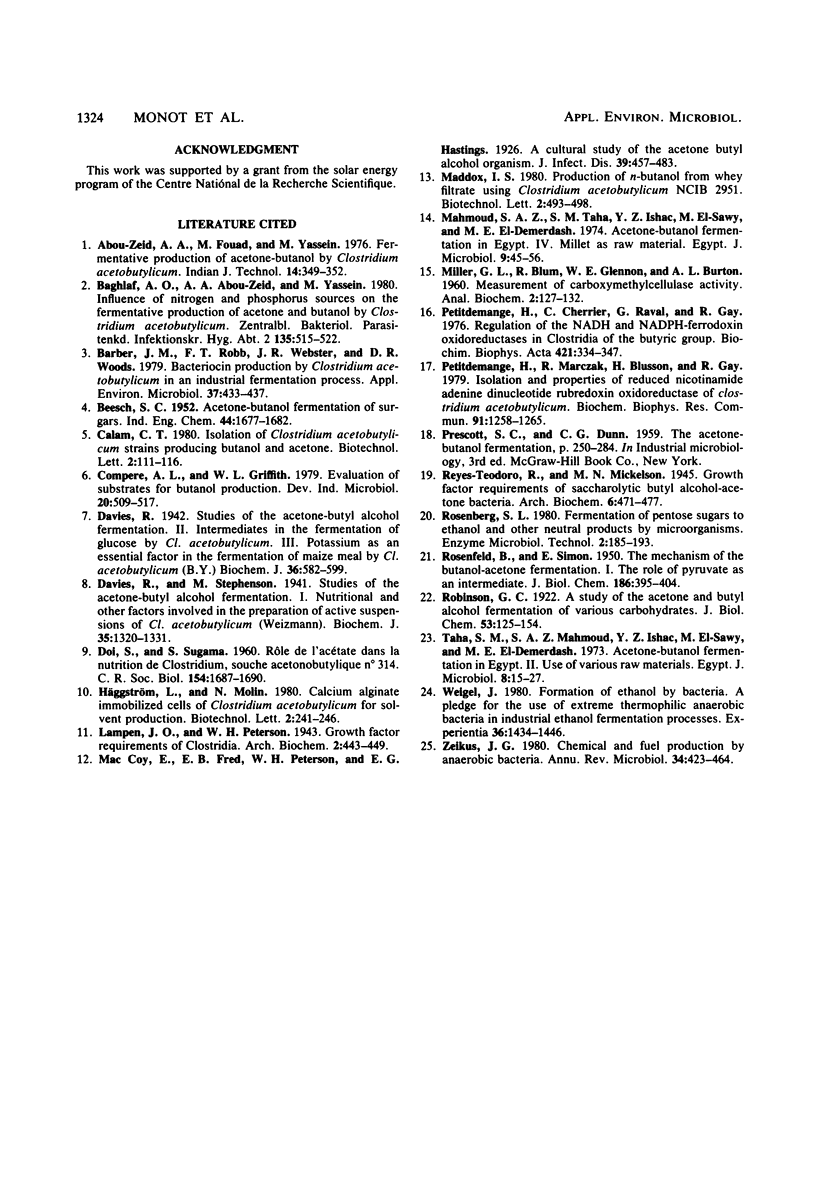
Selected References
These references are in PubMed. This may not be the complete list of references from this article.
- Barber J. M., Robb F. T., Webster J. R., Woods D. R. Bacteriocin production by Clostridium acetobutylicum in an industrial fermentation process. Appl Environ Microbiol. 1979 Mar;37(3):433–437. doi: 10.1128/aem.37.3.433-437.1979. [DOI] [PMC free article] [PubMed] [Google Scholar]
- DOI S., SUGAMA S. [Role of acetate in the nutrition of Clostridium, acetone and butyl alcohol producing strain No. 314]. C R Seances Soc Biol Fil. 1960;154:1687–1690. [PubMed] [Google Scholar]
- Davies R., Stephenson M. Studies on the acetone-butyl alcohol fermentation: Nutritional and other factors involved in the preparation of active suspensions of Cl. acetobutylicum (Weizmann). Biochem J. 1941 Dec;35(12):1320–1331. doi: 10.1042/bj0351320. [DOI] [PMC free article] [PubMed] [Google Scholar]
- Davies R. Studies on the acetone-butyl alcohol fermentation: Intermediates in the fermentation of glucose by Cl. acetobutylicum. 3. Potassium as an essential factor in the fermentation of maize meal by Cl. acetobutylicum (BY). Biochem J. 1942 Sep;36(7-9):582–599. doi: 10.1042/bj0360582. [DOI] [PMC free article] [PubMed] [Google Scholar]
- Petitdemange H., Cherrier C., Raval R., Gay R. Regulation of the NADH and NADPH-ferredoxin oxidoreductases in clostridia of the butyric group. Biochim Biophys Acta. 1976 Feb 24;421(2):334–337. doi: 10.1016/0304-4165(76)90300-7. [DOI] [PubMed] [Google Scholar]
- Petitdemange H., Marczak R., Blusson H., Gay R. Isolation and properties of reduced nicotinamide adenine dinucleotiderubredoxin oxidoreductase of Clostridium acetobutylicum. Biochem Biophys Res Commun. 1979 Dec 28;91(4):1258–1265. doi: 10.1016/0006-291x(79)91202-6. [DOI] [PubMed] [Google Scholar]
- ROSENFELD B., SIMON E. The mechanism of the butanol-acetone fermentation. I. The rôle of pyruvate as an intermediate. J Biol Chem. 1950 Sep;186(1):395–404. [PubMed] [Google Scholar]
- Zeikus J. G. Chemical and fuel production by anaerobic bacteria. Annu Rev Microbiol. 1980;34:423–464. doi: 10.1146/annurev.mi.34.100180.002231. [DOI] [PubMed] [Google Scholar]


